Towers of Simon Rodia
1921 to 1954 – Simon Rodia
1765 East 107th Street – map
Declared: 2/15/63
Officially named the Towers of Simon Rodia, HCM No. 15 is better known to you, me, and everyone else who’s ever heard of them as the Watts Towers.
These towers have got to be among the most photographed of all the Los Angeles monuments, but you can’t really appreciate this landmark by looking at a picture – you need to stand there, in what was one guy’s yard, to grasp the work of that one man.
That one man was Simon Rodia, an Italian immigrant who spent time in Pennsylvania, Seattle, and Long Beach before settling on this triangular plot of land in Watts. In 1921, at the age of 42, wanting to do “something big”, he starts his monument by slapping up the walls first, using mainly bedsprings as structure. He calls his work Nuestro Pueblo (Our Town). Then, beginning within the narrower, east end of the wedge, he constructs the “Ship of Marco Polo”, a replica boat with a 28-foot spire.
The south wall
What did he use to build these monuments? Well, what didn’t he use? For starters, Simon didn’t use bolts or rivets, and he didn’t weld. However, he employed pieces of porcelain, ceramic tile, bottles, shards of pottery, scrap metal, rocks, china, sea shells he hauled in from the coast, and broken glass. (Man, I wish I would’ve owned stock in 7-Up and Milk of Magnesia back in the thirties – I’d be paying someone to write this post today.) He used steel pipes, steel rods, wire mesh, cement, and mortar for support. And if the three towers weren’t enough, he also constructed fourteen other structures within, including a patio, a gazebo, a fountain, and a bunch of bird baths. Within the mix, you’ll see lots of hearts, Simon’s initials, and the dates of 1921 and 1923. The tallest tower reaches just under 100 feet.
Inside of the north wall. Even the ground/floor is engraved. Rodia began adding those buttresses afer 1933's Long Beach earthquake.
Rodia’s house, adjacent to his art, burned down from an errant firecracker a year or so after he moved out.
The spire of the "Ship of Marco Polo" in the foreground
Rodia's kiln
In the late-50s, the city was eager to pull down the towers for safety reasons, but a subsequent stress test was passed with flying colors. The site remained unscathed during the '65 riots, too. However, the 1994 Northridge earthquake proved more debilitating, and the site was shut up until restoration could be completed seven years later.
A working (but not when I was there) fountain
The cactus garden
"SR"
The Towers of Simon Rodia are now part of the California State Parks system (it's the smallest State Park) but are overseen by the Los Angeles City Cultural Affairs Department.
Listed on the National Register of Historic Places and designated a National Landmark, the site’s open for touring. So head to Watts, cough up the $7, and see Rodia’s work of art in person.
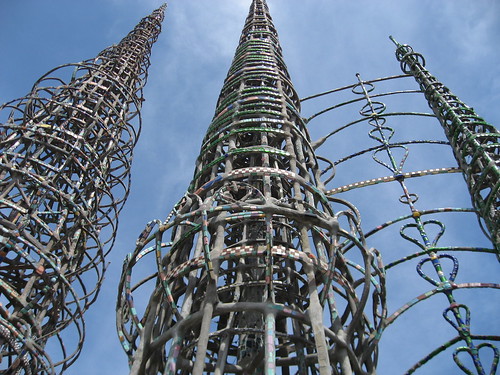
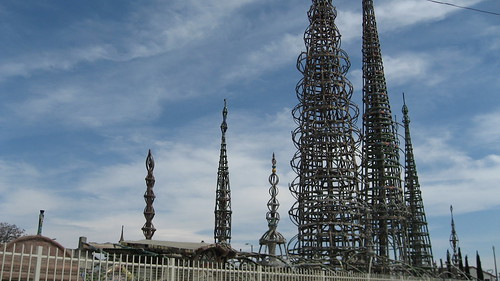
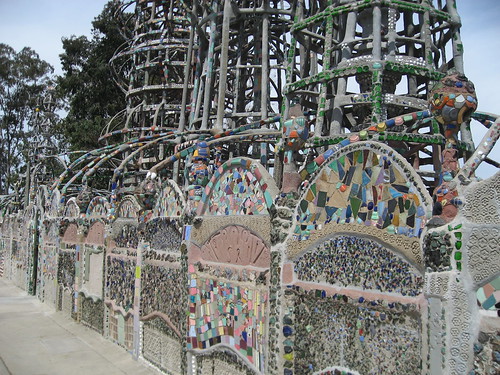
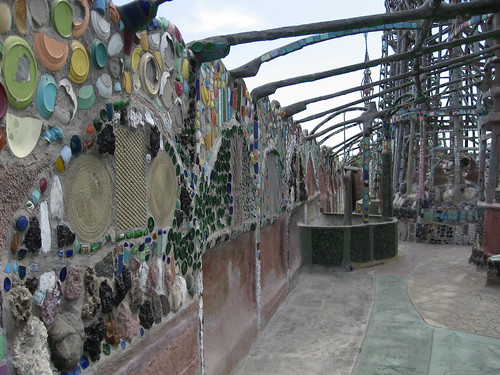
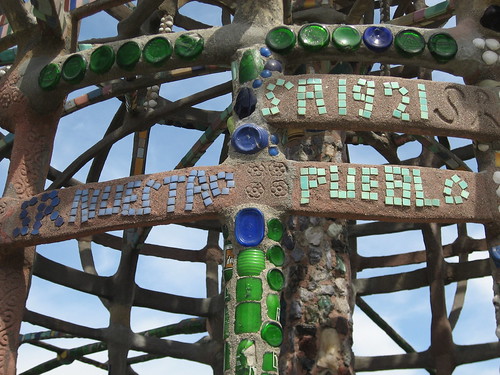
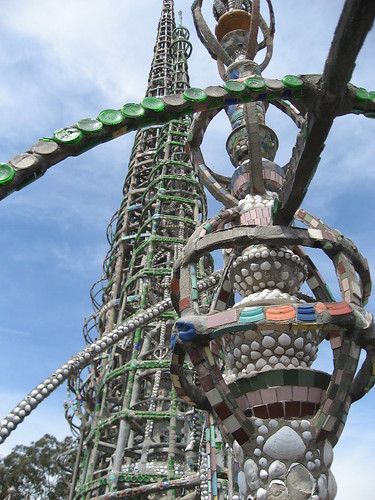
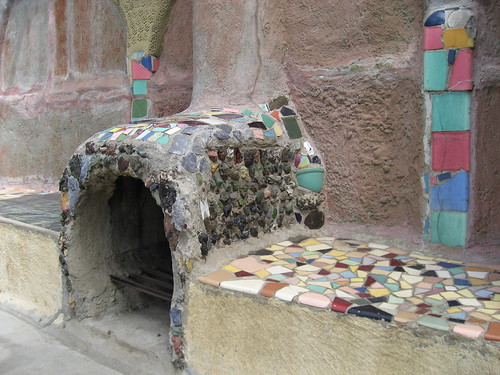
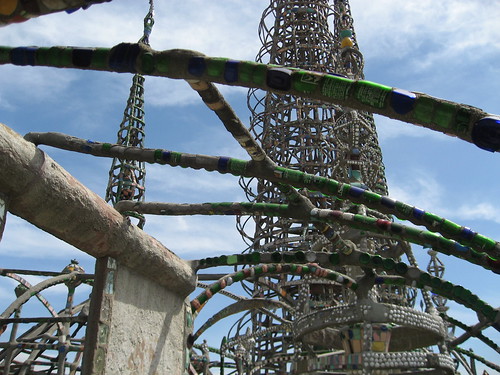
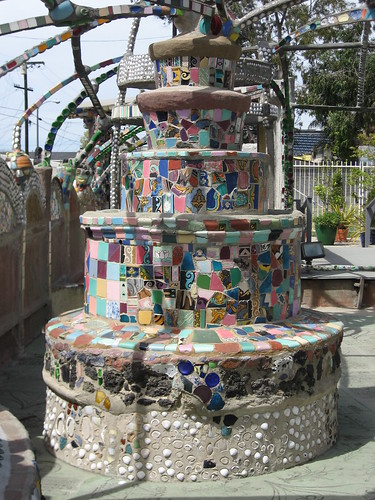
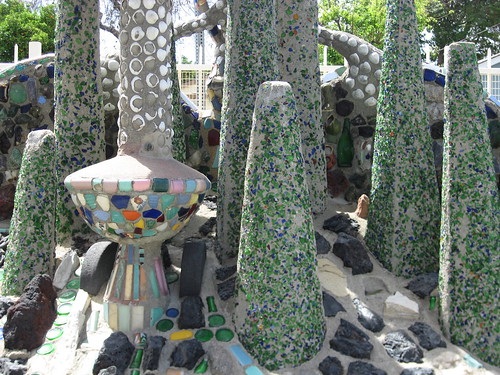
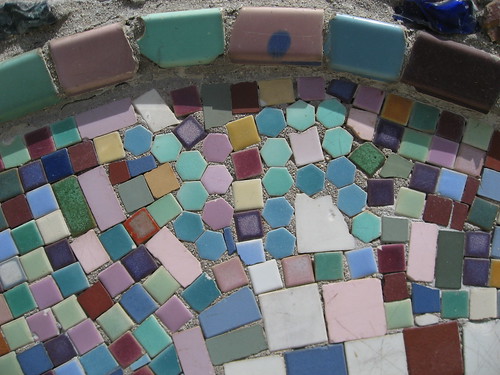



4 comments:
You know, I've only seen the Watts Towers from the blue line, where you can only see the top of 2 towers. I had NO idea they were so many. I also had no appreciation on how intricate they are. My dad and I have just added a trip to our agenda. So cool!
The Internet Archive has a great movie from 1957 about his towers.
http://www.archive.org/details/TowersTh1957
Strange music, over-wraught narration. Great scenes of him collecting some pieces for the towers, as well as actual construction.
Terrific summary and photos of this most amazing place.
I agree completely that, "you can’t really appreciate this landmark by looking at a picture – you need to stand there, in what was one guy’s yard, to grasp the work of that one man."
Thanks, Steven.
Post a Comment